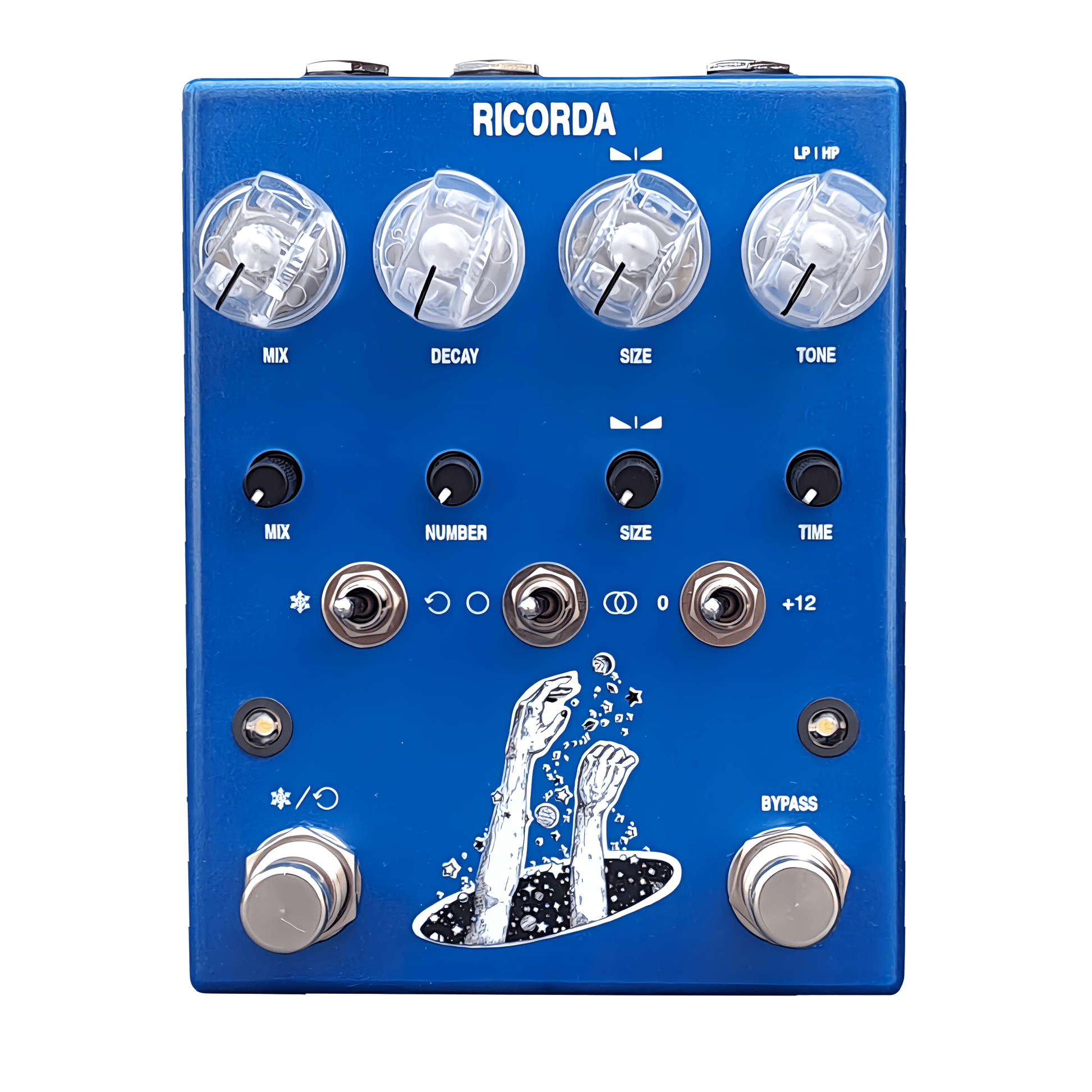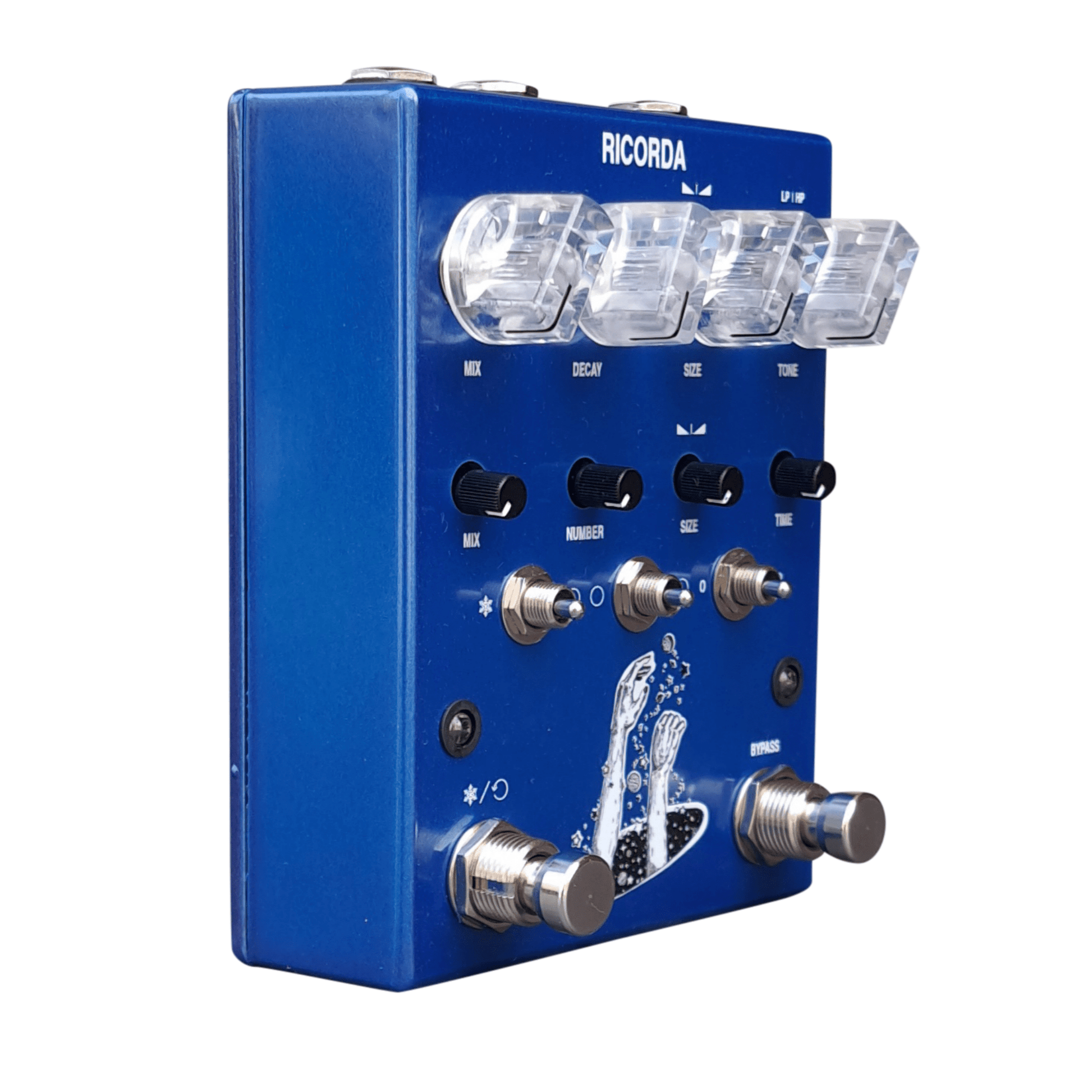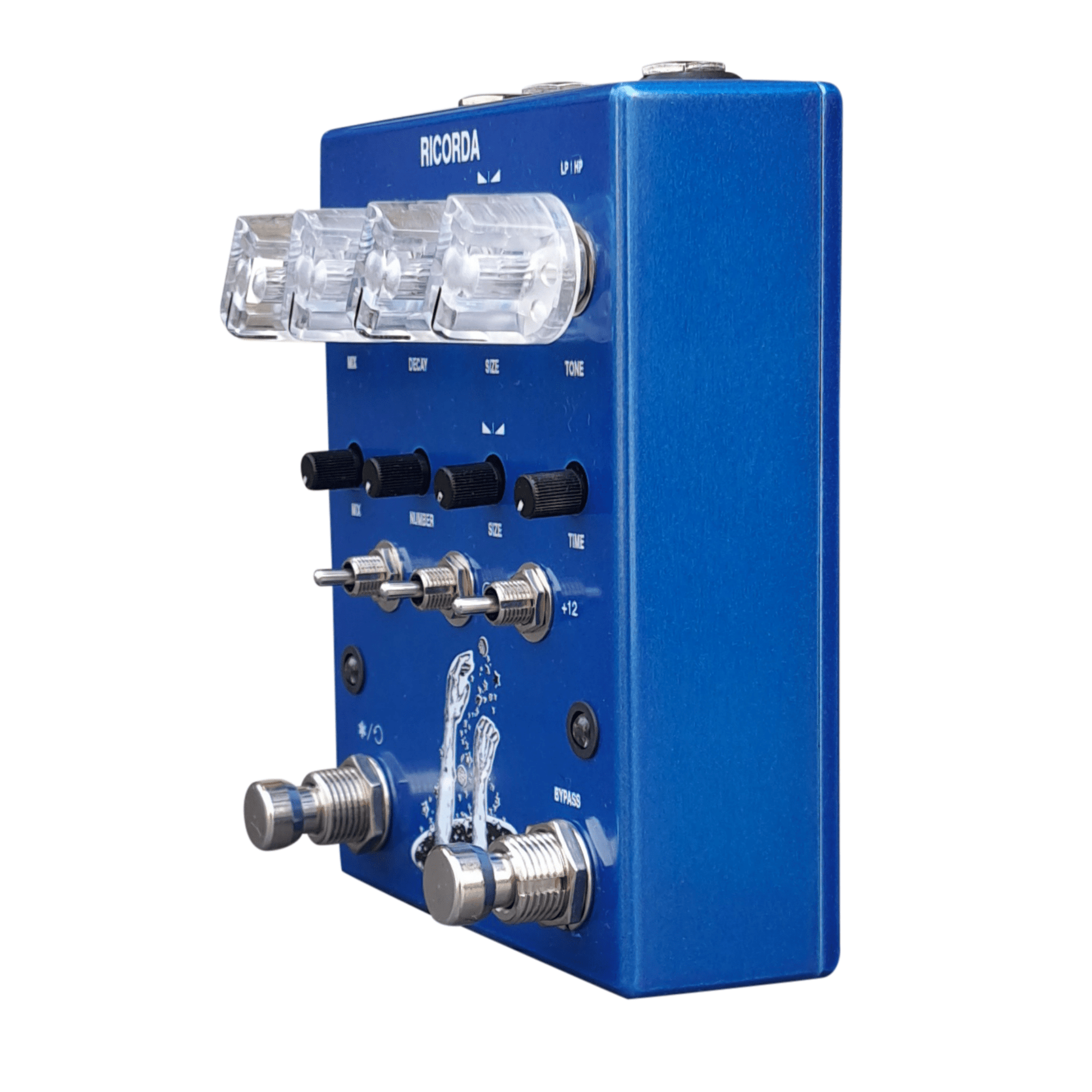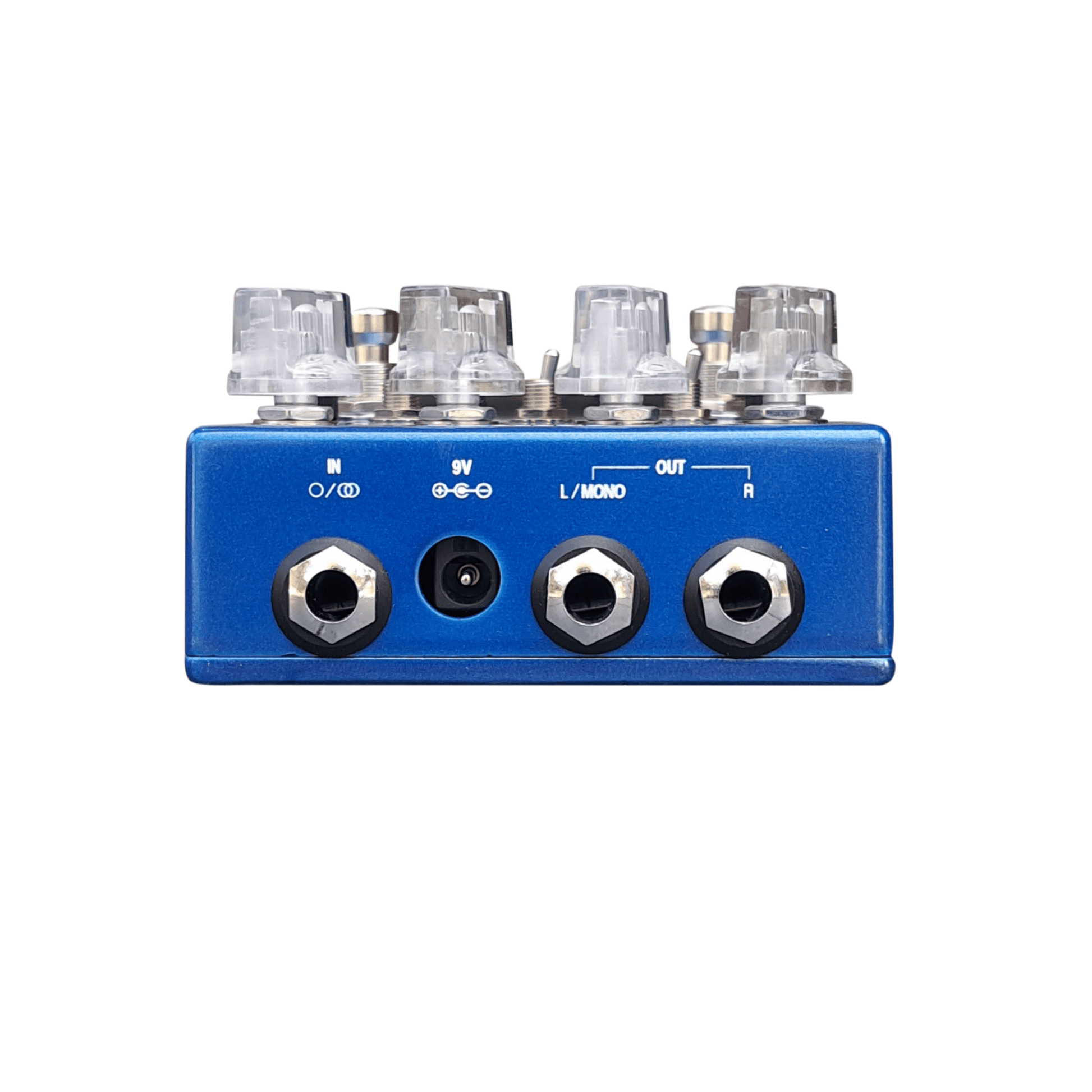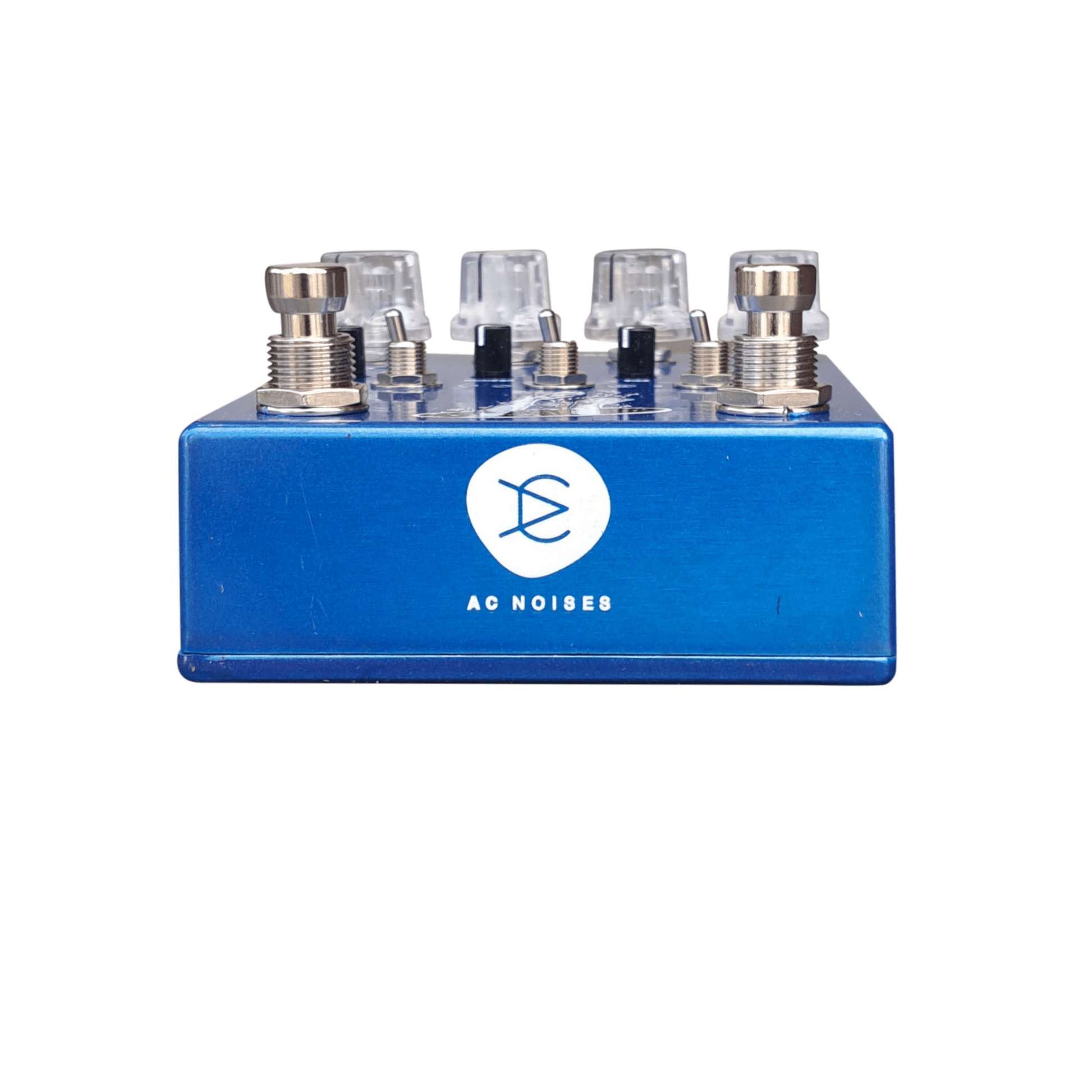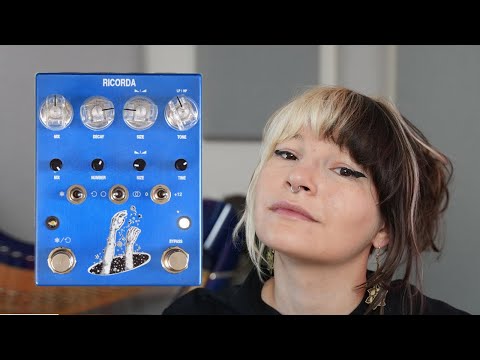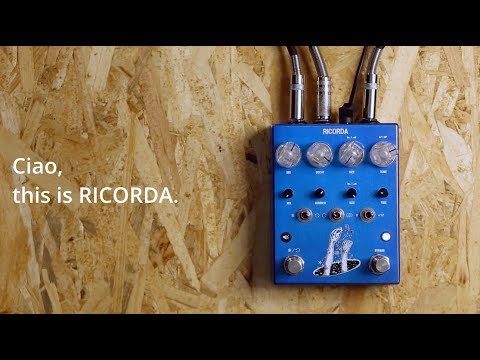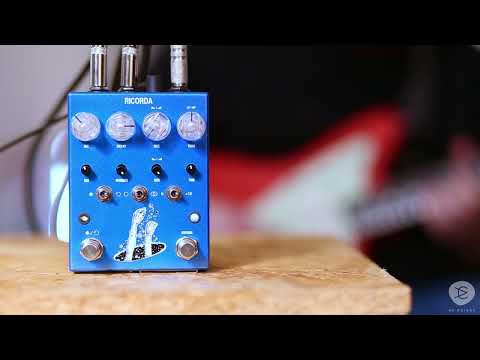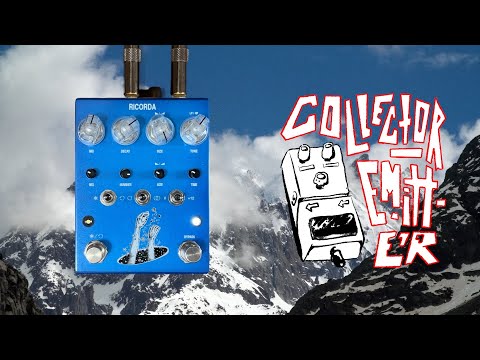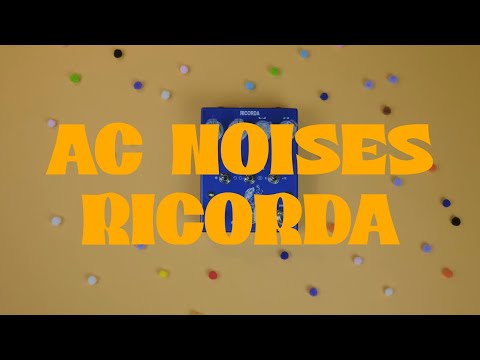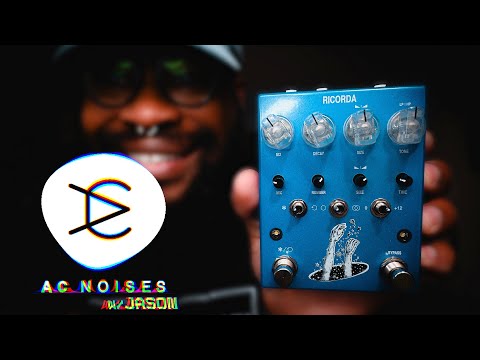AC Noises
Ricorda
Ricorda
FREE 2Day Shipping
FREE 2Day Shipping
USA Free 2 Day Shipping
(Next day in New England)
Canada NOW FREE!
Worldwide 30USD Flat Rate*(Wherever you are)
Flat Rate means no additional charge for more than one pedal.
No Hassle Returns
No Hassle Returns
Just let us know within 30 days from arrival.
If there's a malfunction, shipping's on us.
Couldn't load pickup availability
Reverb/Grains
RICORDA means “remember” in second person imperative (tu, ricorda = you, remember).
Music, like memories, has the ability to transport us to different times and places. It has the power to evoke emotions buried deep within us and stir memories long forgotten. Whether it's the first Xmas eve spent with our families, that road trip with friends, or the quiet moments alone with our thoughts, fragments of memories triggered by sounds and their reverberations can transport us back in time.
Born from the collaboration between AC noises and Andrea Degli Esposti from BunkerNoise, this effect pedal is the very first stereo unit of AC noises current catalogue.
Developed on an incredibly powerful DSP (which is often used in modular synthesizers industry more than the effects pedals one), RICORDA provides a multitude of parameters for sculpting and shaping the reverberant space. From controlling the density and size of the grains to modulating their feedback and stereo spread, the possibilities for sonic exploration are virtually limitless. With each adjustment, the reverberant environment evolves by revealing new dimen- sions and sonic possibilities, also thanks to the freeze/loop feature and the “hidden” secondary mode as well.
TOGGLE SWITCH MONO / STEREO INPUT:
RICORDA can be used both in mono and stereo.
You can choose between these two modes input by using the relative toggle switch.
In order to plug an instrument which provides a stereo output (L and R), use a TRS jack adapter to host both cables/signals and then plug the TRS into RICORDA by leaving the toggle switch in stereo input position.
If the original signal from your instrument comes in mono (eg. guitar) leave the toggle switch in mono position. If using a mono output consider L / MONO only (there will be no signal from R when the effect is bypassed). Anyway, using both outputs allows to use the effect in stereo or dual mono.
RICORDA comes from the factory with a true stereo output. Anyway, it’s possible to convert the outuput in dual mono (so a sum of L+R in each channel when the pedal is engaged through the secondary mode (more details about secondary mode in page 3).
REVERB PARAMETERS (PRIMARY)
MIX: it gives you flexibility in how much of the original sound you want to retain versus how much of the reverbe- rated sound you want to introduce.
DECAY: adjusts the duration of the reverb tail, which is the portion of the reverberation that continues after the initial sound has ceased. Turning the knob clockwise increases the decay time, resulting in a longer and more pronounced reverb tail. Conversely, turning it counterclockwise shortens the decay time, producing a tighter and more immediate reverb effect.
SIZE: it determines the size of the virtual space, affecting the duration and density of reflections. By turning this knob clockwise (past noon) the ambient perception increases, while turning it counterclockwise (before noon) the reverb’s tail goes in the opposite direction (reverse). By leaving the knob exactly at noon, you’ll be right in the middle of the reflection spot (no size) generating a sort of flanger-ish sound.
TONE / LP-HP: allow to adjust the frequency content of the reverberated audio signal (so it doesn’t affect the original dry signal). At noon, all the frequencies generated by your instrument will be processed and sent to the output.
GRANULAR PARAMETERS (PRIMARY)
MIX: as for the one related to the reverb, it controls how much of the original sound you want to retain versus how much of the processed sound (granular) you want to introduce.
NUMBER: increasing the grains number results in more grains being used, which can lead to denser, richer textures and more complex timbres. Conversely, decreasing the grains number reduces the density of grains, resulting in sparser textures and simpler timbres.
SIZE: same principle of the reverb’s size control. Grains can move forward (past noon) or in reverse (before noon).
TIME: it determines how close/far the grains are collected in relation to the the original source. Going from 0 (time knob fully counterclockwise) onwards, grains are progressively collected further and further away, generating a delay between the original source and grains repetition.
TOGGLE SWITCHES
0 or +12: It allows you to determine in which semitone your grains must play. At 0, those will be reproduced according to the original octave, while in +12 (semitones) grains will play one octave up.
Freeze/Loop: This is a crucial switch, not just for these 2 options but also for the secondary mode of RICORDA.
FREEZE
Freeze mode refers to a technique where a momentary snapshot of an audio signal is captured and sustained infinitely. When freeze mode is activated (toggle switch on and then tap on the footswitch on the left - LED on -), the audio signal is essentially "frozen" at its current state, so basically the audio input is sampled and held. Considering all of the RICORDA parameters and sound capabilities, this feature is definitely the best one in order to create drones or intricate sonic landscapes. When FREEZE is engaged, it’s possible to play above the “frozen” portion in a full dry mode. To disengage the FREEZE mode, just tap again on the same footswitch (LED off).
LOOP
When switching the function of the second footswitch it now controls the loop function.
RICORDA’s loop system provides up to 2 minutes of recording.
To record a loop, just tap the footswitch on the left once. At this point, the relative LED blinks to indicate that the pedal is in recor- ding mode. When tapping the same footswitch again, recording stops as the LED stops blinking and the loop starts to play.
Once a first loop has been recorded, it’s possible to overwrite new loops infinitely.
All of the subsequent loop layers refer to the recording time of the first one.
To delete a loop, just hold the relative footswitch for 2 seconds. Led will blink fast before turning off and the whole recording will be deleted.
RICORDA’s loop system comes in “post” from the factory, that means that once recorded, the user can play the pedal in total different settings without effecting the loop.
Anyway, thanks to the secondary mode, loop mode can be switched to “pre” in order to be manipulated in real time.
SECONDARY MODE
RICORDA provides a sort of hidden feature called “secondary mode”
By entering in this mode, all of the knobs and switches will control different parameters.
In secondary mode, parameters must be intended as described below.
REVERB PARAMETERS IN SECONDARY MODE
MIX DIFFUSE: controls the reverb’s spread and density. It essentially determines how "spread out" the reflections are in the simulated space.
DECAY LFO SPEED: it determines how quickly the LFO waveform repeats itself.
SIZE LFO DEPTH: it controls the amount of modulation applied by the LFO.
TONE & LP/HP PRE-DELAY: it determines the delay time between the original sound signal and the onset of the reverberant sound.
GRANULAR PARAMETERS IN SECONDARY MODE
MIX FEEDBACK: it controls the amount of the output signal that is fed back into the input of the effect process.
NUMBER SPRAY: it determines how much randomly the grains are distributed across the audio spectrum. This technique adds
an element of unpredictability and randomness, resulting in a more organic and varied sound texture.
SIZE STEREO SPREAD: it controls the width of stereo field. Increasing the value of this parameter spreads the grains further apart between the left and right channels, widening the stereo image.
TIME PITCH OFFSET: it modifies the pitch of each grain relative to the original pitch of the source material. Pitch offset can be adjusted within a range of 0 to 12 semitones. Adjusting the parameter within this range allows to control how much the pitch of the grains deviates from the original pitch of the source material.
TOGGLE SWITCHES IN SECONDARY MODE
FREEZE/LOOP POST-PRE position (LOOP): RICORDA’s loop system comes from the factory in “post” position, allowing the user to play above the loop without effecting the recording when tweaking knobs. When in secondary mode, it’s possible to switch to “PRE” by moving the freeze/loop toggle switch to the right. In this case, when back to the primary mode, it will be possible to manipulate the whole recording (loop) by tweaking the relative knobs.
MONO/STEREO DUAL MONO OUTPUT/TRUE STEREO OUTPUT: RICORDA’s output comes from the factory in true stereo mode. While in secondary mode, move the mono/stereo input toggle switch to the left in order to turn the output in dual mono (so a sum of L+R for each channel).
0 +12 PRE-POST position (GRAINS): as factory settings, the granular side of RICORDA is placed before the reverb (pre). Move the 0 +12 toggle switch to the right to place that after the reverb instead (post).
DEFAULT SECONDARY SETTINGS:
Diffuse: 40%
LFO Depth: 20%
LFO Speed: 20% PreDelay: 20% GrainsFeedback: 20% Spray: 0%
Stereo Spread: 60% PitchOffset: 0
USB-C PORT:
When removing the backplate from the pedal, it’s possible to spot a vertical USB-C port on the bottom right of the board. When a new firmware will be available, just visit acnoises.com and follow the instructions.
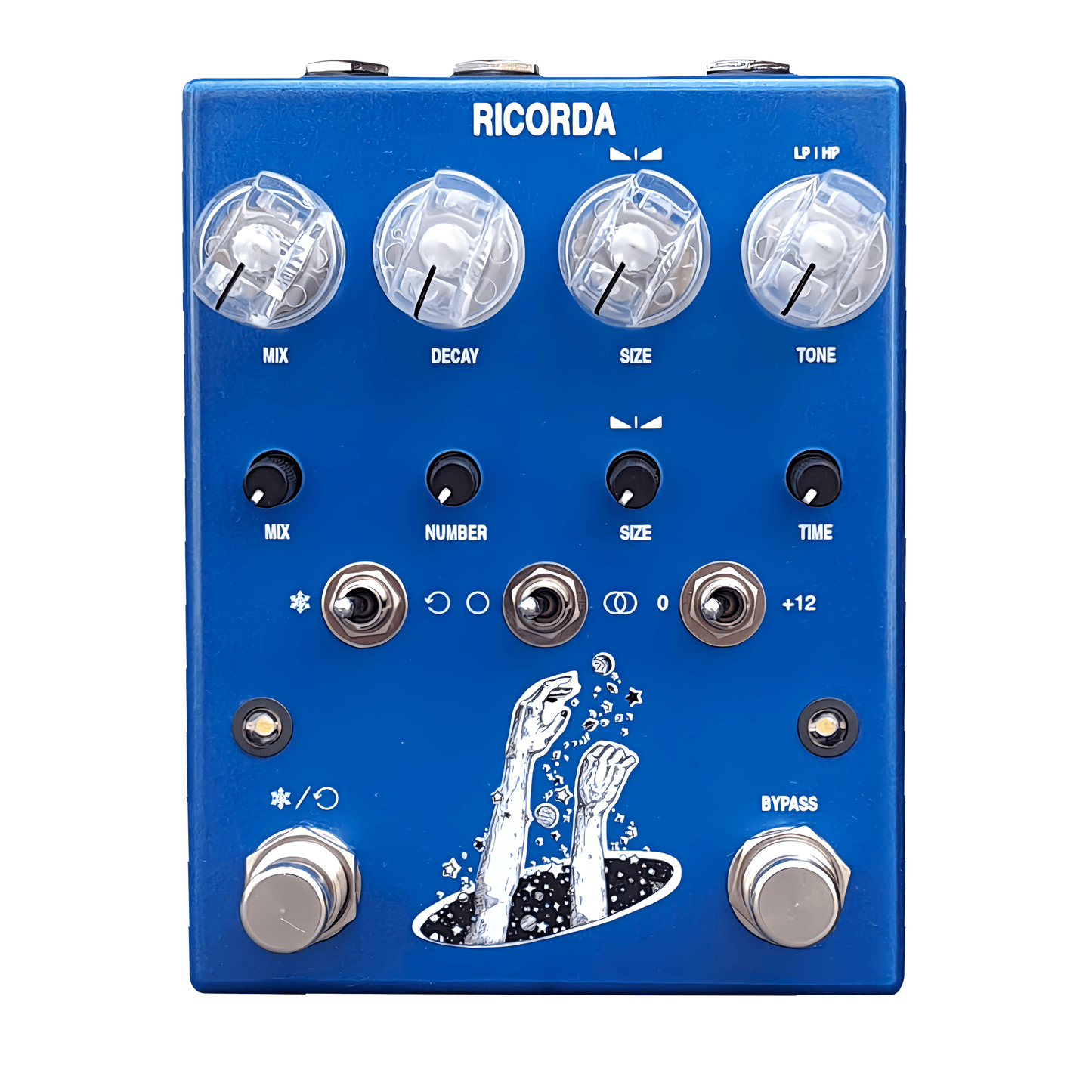
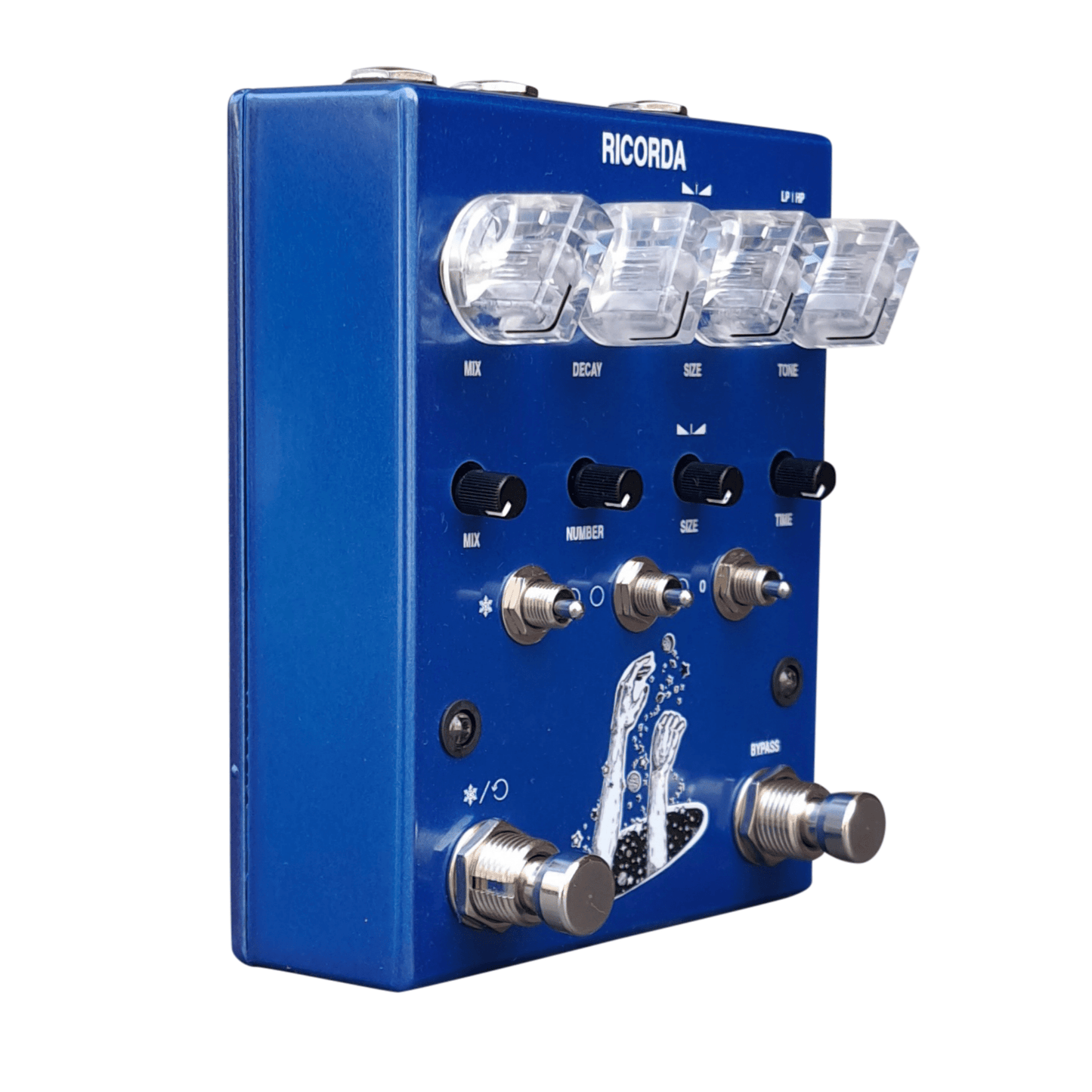
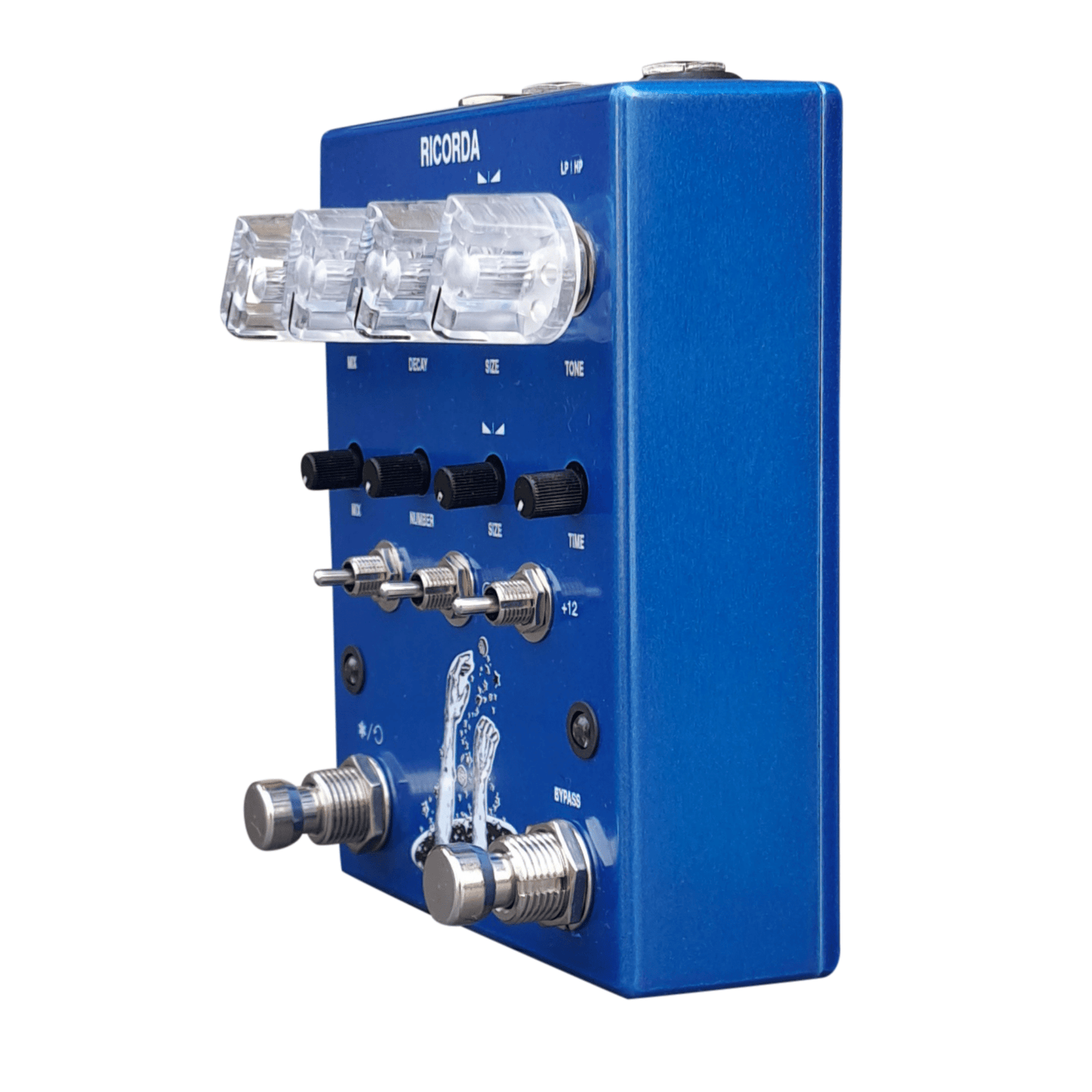
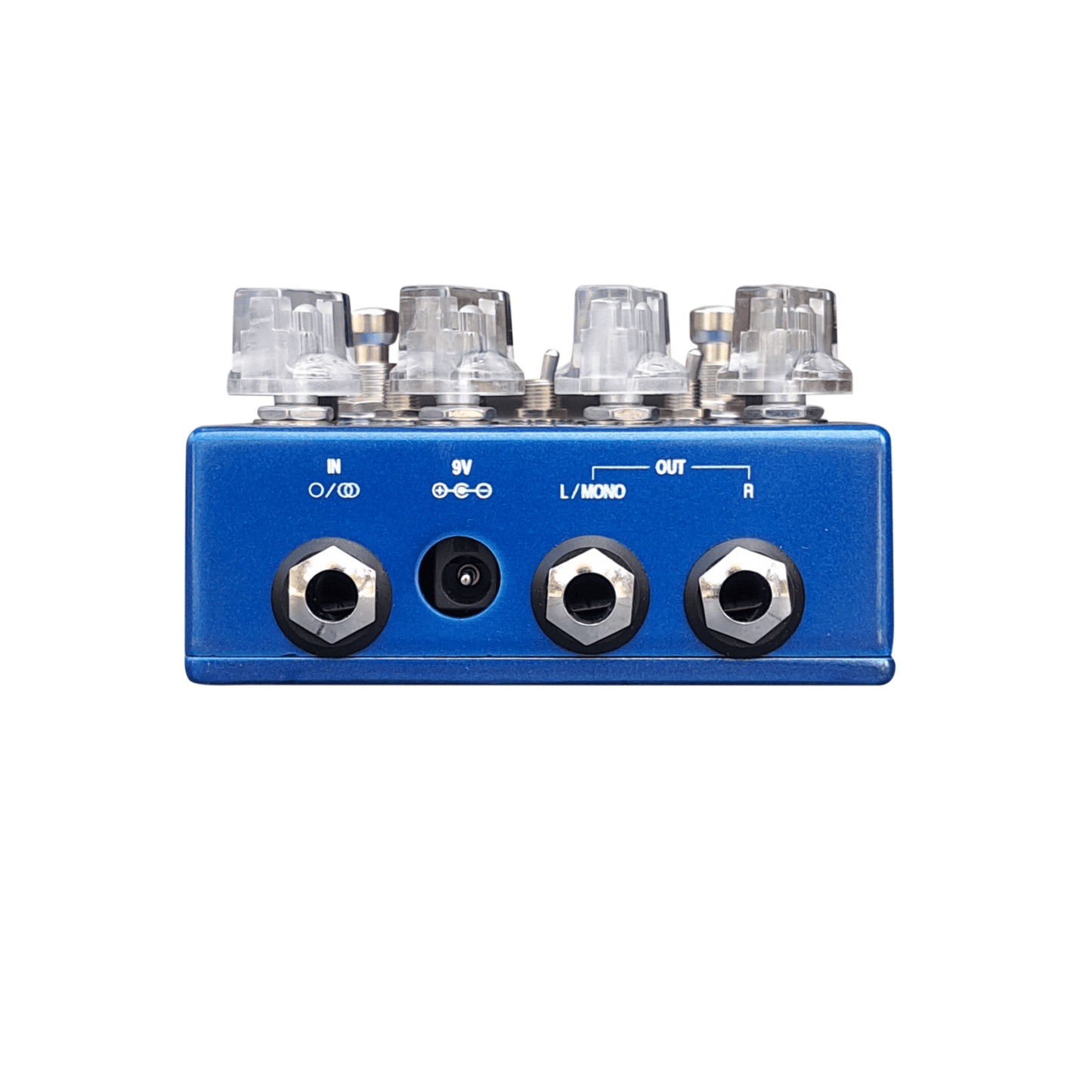
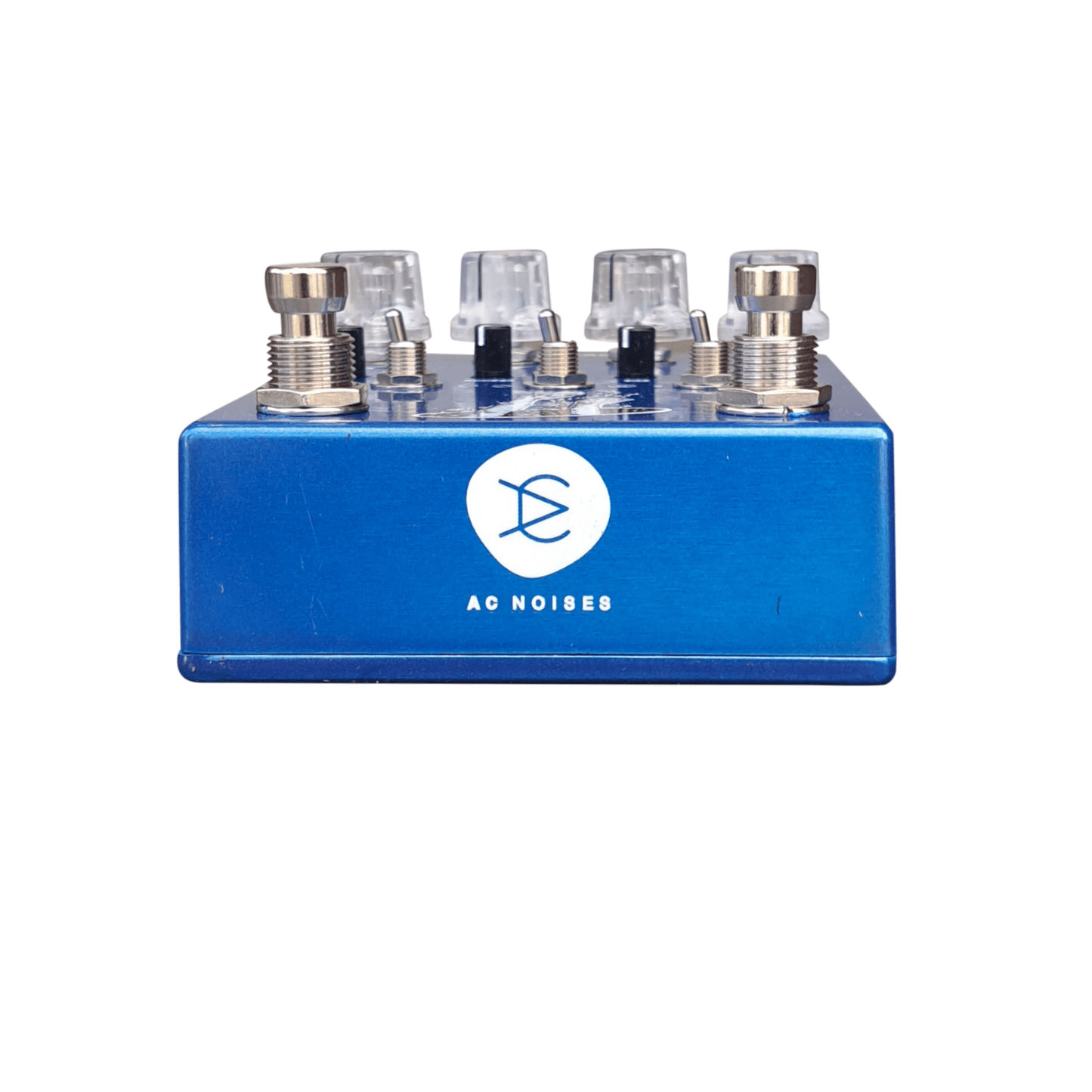
The Ricorda is ALMOST the perfect granular pedal. Lots of incredibly interesting textures that chop & mutilate the delayed/reverberated signal and sit behind your core tone in a really beautiful way. Stereo spread also sounds really great but unfortunately there is a large volume drop when engaging this pedal and worst of all, there's apparently no way of bringing it back up to unity without the help of an outside source! It makes it very hard to use the Ricorda in a live situation (unless you're ok with the volume drop) and completely relegates it to home use. Really hoping for a V2 in the future, where they hopefully add a master volume control of some kind.

